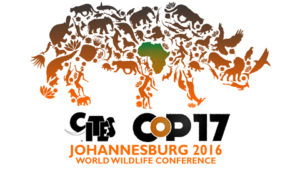 On September 24th, the 17th Conference of the Parties (COP17) of the Convention on International Trade in Endangered Species (CITES) begins. I’ve made a Storify guide to government agencies, scientists, activists, and environmental non-profits who will be tweeting updates from the event. If you want to follow along with these important conservation debates and votes on twitter, follow #COP17 and follow the accounts I’ve highlighted in this Storify.
On September 24th, the 17th Conference of the Parties (COP17) of the Convention on International Trade in Endangered Species (CITES) begins. I’ve made a Storify guide to government agencies, scientists, activists, and environmental non-profits who will be tweeting updates from the event. If you want to follow along with these important conservation debates and votes on twitter, follow #COP17 and follow the accounts I’ve highlighted in this Storify.
Read More “How to follow along with CITES #COP17 on twitter” »





